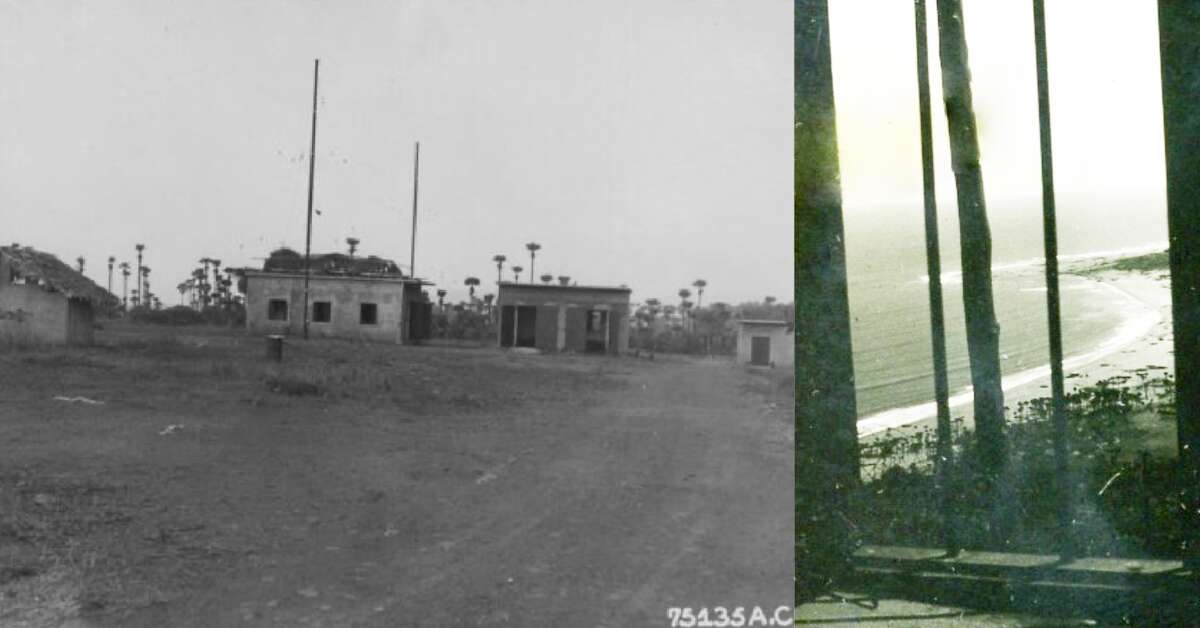82 years ago today, Visakhapatnam would wake up as a city changed, reeling from a Japanese air raid that struck it the previous afternoon, 6 April 1942. News of the attack would be spreading across the world — a peaceful port city suddenly caught in the crossfire of World War II. Five Japanese aircraft from Vice Admiral Ozawa Jisaburo’s force, launched from the light aircraft carrier Ryujo, had raided Vizag between around 1:00 and 1:45 pm, and attacked it a second time between 5:25 pm and 5:45 pm. It is painful to imagine Vizag’s state in the aftermath. Streets were likely deserted, as many residents had fled. The newly developing harbour, the Scindia Shipyard, the powerhouse, and steamers docked at port had been targetted. Nine citizens had lost their lives.
In the wake of such attacks, British forces ramped up defensive measures across their Indian strongholds. One such effort amid World War 2 included the installation of a secret Air Ministry Experimental Station in Visakhapatnam, an early radar setup designed to detect incoming aerial threats.
Vizag history enthusiast John Castellas has conducted extensive research into this radar station and the British defense operations in the city during World War II. Here are his insights:
January 1942 and Vizag was gripped in fear. A total number of 63,000 evacuees were safely brought by Scindia Steam Navigation Company to India, with two Scindia steamers, Jala Durga and Jala Gopal, carrying over 5000 Indian evacuees from Burma, many of them women and children, to Vizagapatam on 3 Jan 1942. Rangoon finally fell to Japanese forces in early March 1942; Singapore had fallen in February 1942. Evacuee reports of daily bombing and destruction were the only source of warnings about a likely Japanese invasion from across the Bay of Bengal. Japanese propaganda claimed that India was to be invaded.

On 6 April 1942, Vizag was bombed by aircraft from the aircraft carrier IJN Ryujo of the Imperial Japanese Navy Task Force in the Bay of Bengal.
In Europe, the war raged, and the RAF deployed their best kept secret in defence of England from German invasion – Radar! RaDaR was the acronym for Radio Detection and Ranging, which was an early warning system that used radio signals as a method to detect aircraft, ships and topographical features. So secret was the technology, that Air Ministry Experiment Station (AMES) was the secret designation for the latest in military technology. Having been successfully deployed in detecting aircraft in the Battle of Britain, the defences of India’s East Coast were readied for any likely Japanese invasion.

Rendugullapalem AMES No 570 (Jodugulla Palem is the current name for this Vizag locality), started on 17 April 1943, the accommodation site was gradually established in the village while the Technical Site of this secret World War 2 radar was constructed on top of Kailasagiri overlooking the Bimili Beach Road in Visakhapatnam.
The local airfield, RAF Vizagapatam, Public Works Department (PWD) and Scindia shipyard assisted in the construction. Barbed wire perimeter fencing, power lines, water, camouflage and a telephone line to the Technical Station on the hill were constructed. The station remained operational until May 1945, when similar units were established along the recaptured Burma and Malaya coast.

Operations Books are marked ‘Secret’ and daily records indicate number of aircraft plotted, range, atmospheric conditions, visitors, manning, training, change of command, illness, technical and medical inspections, repairs and maintenance, parades, celebrations like Christmas, Battle of Britain Church service at St Paul’s and invitations from the Waltair Club.
Waltair AMES No 2000 (H) considered the Holding Unit where meetings and training were held for other units along the coast. Scandal Point, Chain Overseas Low (COL) Station, AMES No 566 was formed in June 1943 under the control of RAF 225 Group. These were export versions of a British pre-war design modified for detecting low-flying aircraft (instead of coastal shipping).
In 1943, the Bay of Bengal coastline was dotted with scores of radar stations operated by RAF technicians who were sworn to secrecy with a penalty of ‘death’. Built in anticipation of a possible Japanese aerial attack against mainland India targets, tropical radar operations would have been difficult, each six-hour shift spent in an isolated, dimly lit cabin peering at a cathode-ray screen.

(Courtesy of family of Flt Sgt E Emerson, RAF Radar Supervisor)
Operation Records show that the ladies from the WAC(I) or Women’s Auxiliary Corps (India) were regularly trained at AMES 570, as they were the plotters in the Filter Room at the headquarters in Andhra University, Waltair. The Filter Room was the concealed reference to the Plotting Room where inputs from each station were relayed by telephone and filtered for size of formations, speed of approach, errors and any atmospheric interference.
The US 4th Army Airways Communications Services (AACS) operated the Long Range Navigation (Loran) Radar as East India Coast System from its base at Waltair. The American technicians were housed in Gangpur House, which, along with other iconic buildings like Hawa Mahal, Vizianagram House, Judges Bungalow, Bobbili Hall and Andhra University, were requisitioned for defence use. Coconada, Waltair, Puri and Char Chapli Island were part of a chain of AACS radar stations along the east coast of India.

This US radar system was requested by the RAF to provide long-range navigation over the Bay of Bengal, the Andaman Islands, and Rangoon and, by night, to Bangkok and toward Singapore. The siting, installation, and initial operation were the responsibility of the Fourth AACS Wing, AAF. Operation was initiated on Apr. 15, 1945. This system was turned over to the Royal Air Force on July 1, 1945.
AMES 570 Operations Records also indicate that local RAF or Army units had a security role limited to camouflage, censorship and training, whereas perimeter security was provided by the Rajaram Rifles, who were the private army of the Rajah of Kolhapur, which was pressed into national service.
The secret Radar facility at Rendugullapalem in Visakhapatnam was decommissioned in May 1945 when the centre of British military operations during World War 2 was rapidly moving down the Burma (Myanmar), Siam (Thailand) and Malaya (Malaysia) coasts towards the allied offensive and recapture of Singapore.
The contributions of Sally Emerson, daughter of Flt Sgt E Emerson (RAF – Radar Supervisor), are acknowledged as she shared her father’s war time diaries and photographs and her personal research of his time in Vizag. She has recently visited Vizag to retrace her father’s footsteps.
To know more about the Japanese air strikes in Vizag, read this article.
Written by John Castellas whose family belonged to Vizag for 5 generations. Educated at St Aloysius, migrated to Melbourne, Australia in 1966, former General Manager Engineering at Boeing & Qantas Airways, in retirement Lecturers in Aviation Management at Swinburne University and is a Vizag aficionado. He can be contacted at jcastell@ozemail.com.au
Stay tuned to Yo! Vizag website and Instagram for more heritage stories.










Discussion about this post